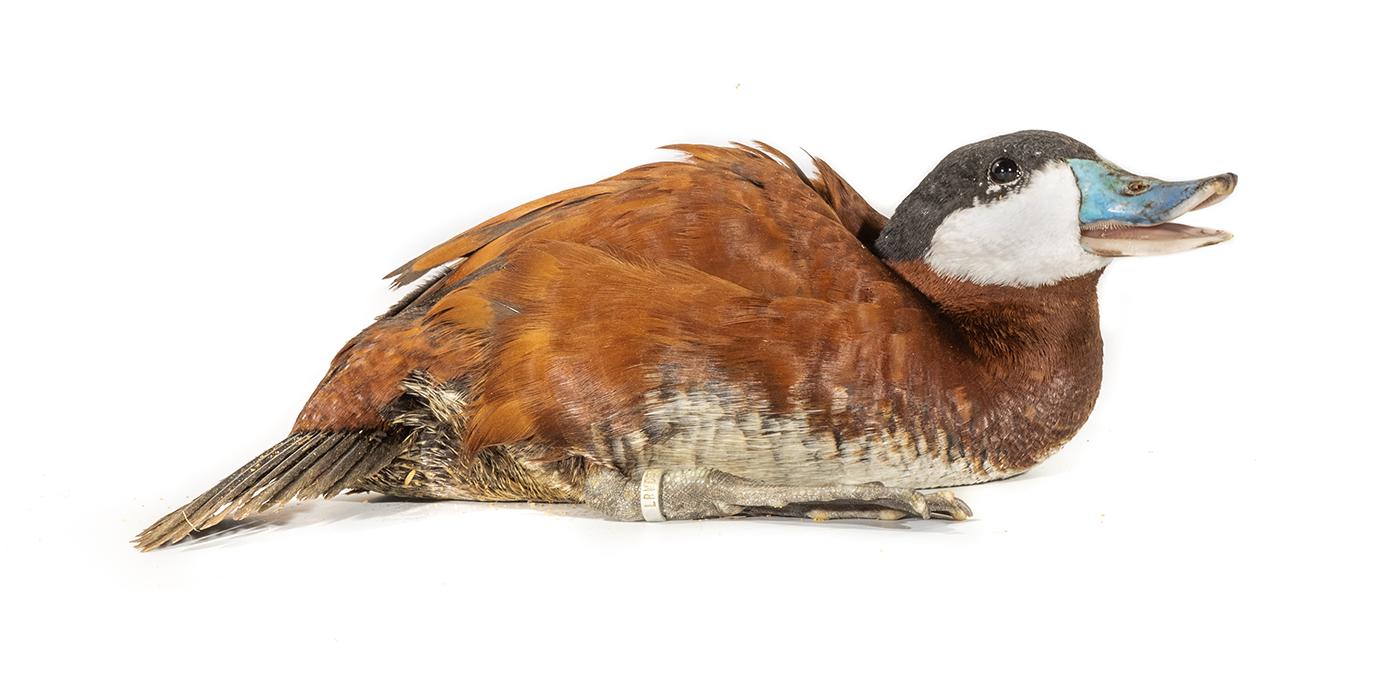Physical Description
Mature male ruddy ducks undergo seasonal coat color molting, which means that their coats change color throughout the year depending on the current season. During the summer, the males have deep brown feathers and light blue bills. In the winter months, their coats become a lighter shade of brown and their bills change from light blue to gray.
Females and immature males have an appearance similar to the mature male’s winter look, with brownish feathers and a sideways stripe across their cheeks.
Size
Native Habitat
Ruddy ducks prefer lakes, rivers, and wetlands.
They are native to North America, where the majority of them are found. They spend most of the winter (non-breeding months) in the United States and Mexico before flying north to western Canada for the summer breeding season. They were also introduced to Western Europe in the 1930's for hunting purposes and are now considered an invasive species.
Lifespan
Communication
Food/Eating Habits
Sleep Habits
Social Structure
Reproduction and Development
The change in the males’ color occurs due to the breeding season that takes place from May to August every year. Males who have more deeply-colored bills and coats will be more successful with attracting females for mating.
Males court females by splashing in the water and blowing bubbles with their bills. They utilize an elaborate mating dance which involves blowing up their necks with air, tapping their inflated chests with their bills, and then finally releasing the air, which makes a low squelching sound.
Females will typically lay anywhere from three and thirteen eggs at a time. Eggs usually take between three and four weeks to hatch after being laid. Hatchlings are highly independent, so young are only cared for by their mothers for a short period of time. Newly-hatched ducks are able to dive and hunt for food on their own just 24 hours after hatching. Ducklings are preyed upon by larger birds such as herons and gulls, as well as small mammals such as raccoons and minks.
Conservation Efforts
Ruddy ducks are not currently at risk of becoming endangered. They are rarely hunted in the wild and don’t provide any valuable resources. In the United Kingdom, where they are invasive, conservationists have found recent success in reducing their numbers by large amounts. However, ruddy duck populations remain out of control in other European countries and pose a serious threat to native bird populations.
Help this Species
Be a smart consumer. Choose products made with sustainable ingredients, such as Smithsonian certified Bird Friendly coffees, which support farmers striving to limit their impact on wildlife and habitat.
Practice ecotourism by being an advocate for the environment when you’re on vacation. During your travels, support, visit or volunteer with organizations that protect wildlife. Shop smart too! Avoid buying products made from animals, which could support poaching and the illegal wildlife trade.
Organize or attend a stream, river, lake or other waterway cleanup in your area to preserve aquatic habitats for local species.
Conservation starts with you! Join a citizen science project where you can help collect valuable data for scientists. Encourage your friends and family to get involved too.
Smithsonian's National Zoo and Conservation Biology Institute. (n.d.). Ruddy duck. Retrieved January 8, 2026, from https://nationalzoo.si.edu/animals/ruddy-duck
Animal News



